House Interior Painting Costs
Interior painting costs range from $1.50 to $4.50 per square foot, including labor, materials, and paint. A standard 2,000-square-foot home would translate to a cost of $3,000 to $7,000 for the entire interior.
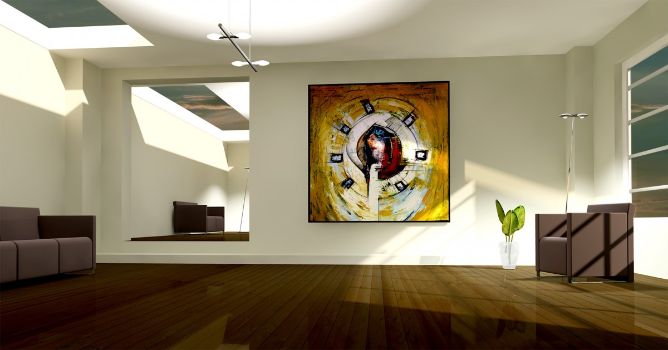
House Exterior Painting Costs
Exterior painting costs are higher than interior painting, typically ranging from $2.00 to $6.00 per square foot. A standard 2,000-square-foot home would translate to a cost of $4,000 to $10,000 for the exterior.
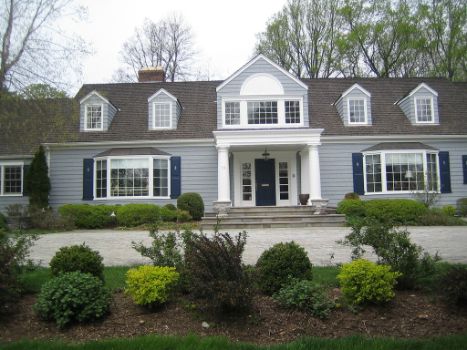
National Average
The national average for painting a home is $3,200.
Common House Sizes in the US and Average Paint Price
Small House (1,000 – 1,500 sq ft)
- Interior: $1,500 – $5,250
- Exterior: $2,000 – $7,500
Medium House (1,500 – 2,500 sq ft)
- Interior: $2,250 – $8,750
- Exterior: $3,000 – $12,500
Large House (2,500 – 4,000 sq ft)
- Interior: $3,750 – $14,000
- Exterior: $5,000 – $20,000
Extra Large House (4,000+ sq ft)
- Interior: $6,000+ (costs can vary widely)
- Exterior: $8,000+ (costs can vary widely)
These are rough estimates, and actual costs may vary based on the project’s complexity, paint quality, local labor rates, and additional preparation work. It’s always best to get multiple quotes from local painting contractors to determine a more accurate cost for your specific project.
Related Guide: How Much Does It Cost To Finish A Basement?

Cost to Paint House Exterior by Siding Type
- Aluminum or metal: $1.50 to $2.50 per sq. ft.
- Brick: $1.50 to $4.00 per sq. ft.
- Concrete: $1.50 to $3.50 per sq. ft.
- Exterior Foundation: $1.00 to $3.00 per sq. ft.
- Stucco: $2.00 to $6.00 per sq. ft.
- Vinyl: $1.50 to $3.00 per sq. ft.
- Wood: $2.00 to $5.00 per sq. ft.
DIY vs. Professional House Painting Costs
DIY painting costs are typically lower than professional painting costs because you are not paying for labor. By taking on the project yourself, you save on labor costs, which can make up a significant portion of the total cost of painting your home.
For a 2,000 sq ft house, professional interior painting can cost between $3,000 to $7,000, and exterior painting can cost between $4,000 to $10,000. Assuming you can complete the job with the same quality as a professional, you might save approximately 50-70% of the total cost by doing it yourself. This means you could save $1,500 to $4,900 on interior painting and $2,000 to $7,000 on exterior painting for a 2,000 sq ft house.
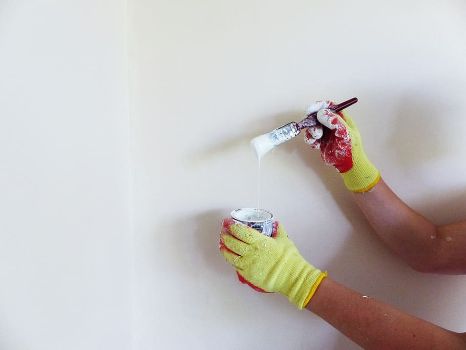
Tools Required for DIY Painting and Average Cost for Each Tool
- Paintbrushes (different sizes and types) – $2 to $15 each
- Paint roller and roller covers – $10 to $30 for a kit
- Paint tray and liners – $5 to $20 for a kit
- Painters tape – $5 to $10 per roll
- Drop cloths or plastic sheeting – $5 to $30 per cloth or roll
- Ladder (for exterior or high interior walls) – $100 to $300 (can be rented)
- Extension pole for paint roller – $10 to $40
- Paint edger – $5 to $15
- Putty knife and spackle (for wall repairs) – $5 to $15 for a putty knife, $5 to $20 for spackle
- Sandpaper or sanding block – $5 to $15
- Paint (cost varies based on quality and brand) – $30 to $60 per gallon
Please note that these are average costs, and actual prices may vary depending on the quality of the tools and materials you choose. Additionally, you may already have some of these tools at home, which would further reduce your DIY painting costs.
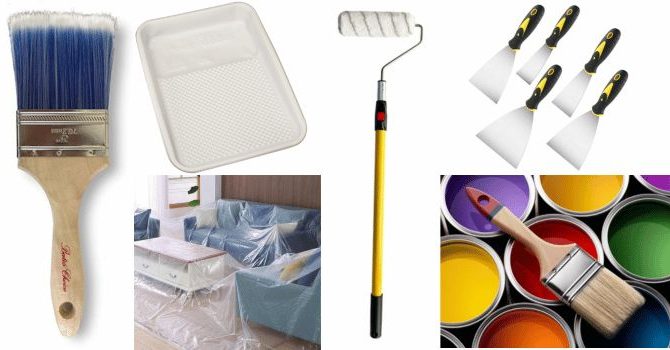
How to Calculate Paint Cost for Your House?
Measure the area
Measure the length and height of each wall (both interior and exterior) you plan to paint. Multiply the length and height to find the square footage of each wall. Add the square footage of all walls to get the total square footage.
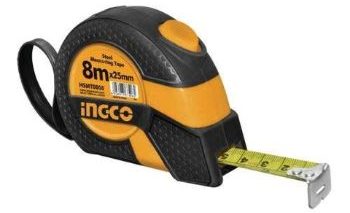
Deduct non-paintable areas
Measure the area of doors, windows, and other non-paintable surfaces, and subtract these measurements from the total square footage calculated in step 1.
Determine the amount of paint needed
A gallon of paint typically covers 350-400 square feet with one coat. Divide the adjusted square footage by the coverage rate of your chosen paint to determine the number of gallons needed. If you plan to apply multiple coats, multiply the number of gallons by the number of coats.
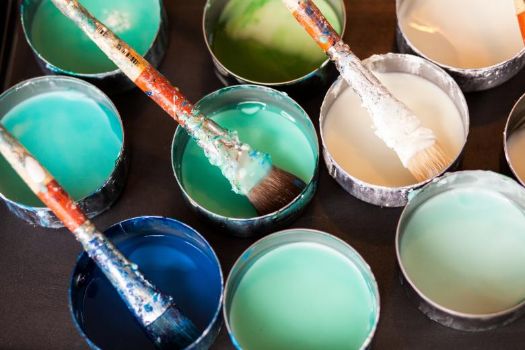
Calculate paint cost
Multiply the number of gallons needed by the cost per gallon of your chosen paint.
Estimate additional materials and supplies
List additional supplies needed, such as paintbrushes, rollers, trays, drop cloths, painters tape, and primer. Estimate the cost of each item, and add them to the paint cost.
Calculate labor costs (if hiring professionals)
If hiring professional painters, you’ll need to factor in labor costs. Painting contractors typically charge per square foot, ranging from $1.50 to $3.50 for interior painting and $2.00 to $5.00 for exterior painting. Multiply the adjusted square footage by the labor rate to determine the total cost.
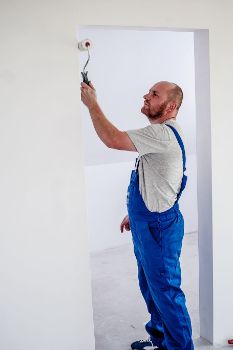
Add it all up
Add the paint cost, cost of materials and supplies, and labor cost (if applicable) to get the total cost of painting your house.
Factors that Affect Paint Cost
House Size
The larger the house, the more square footage that needs to be painted, leading to higher paint costs. For example, painting a 1,500 sq. ft. house would generally cost less than painting a 3,000 sq. ft. house.
Number of Stories
A multi-story house requires more effort, equipment, and time to paint, which can increase labor and equipment costs. For example, a two-story house may cost 25-50% more than a single-story house of the same square footage.
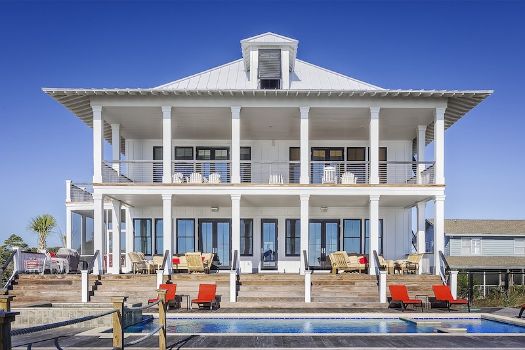
Paint Type
Latex
Latex or water-based paint is the most popular choice for interior and exterior painting. It dries quickly, has low VOCs, and is easy to clean. It typically costs $20 to $50 per gallon.
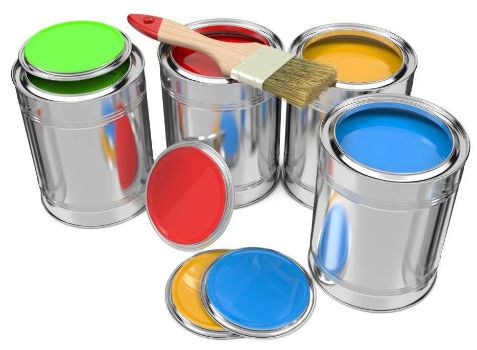
Acrylic
Acrylic paint is water-based paint known for its durability, making it suitable for interior and exterior surfaces. It has excellent adhesion and resists fading. Acrylic paint usually costs $30 to $60 per gallon.

Oil
Oil-based paint is more durable and stain-resistant than latex paint but takes longer to dry and has higher VOCs. It is commonly used for trim, doors, and high-traffic areas. Oil-based paint typically costs $20 to $60 per gallon.
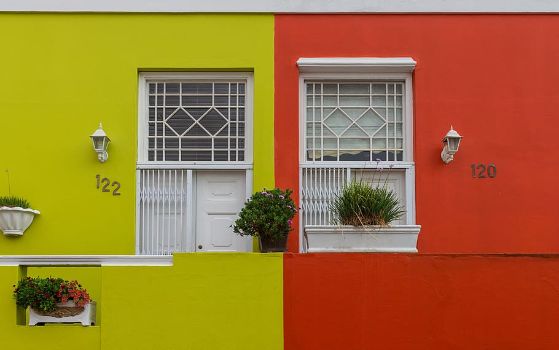
Type of Finish
Flat
Flat paint has a matte finish with no shine. It’s ideal for hiding imperfections on walls but is less washable. Flat paint usually costs $20 to $40 per gallon.
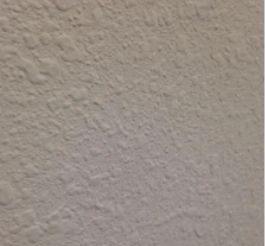
Eggshell
Eggshell paint has a low sheen and is more washable than flat paint. It’s suitable for living rooms, bedrooms, and hallways. Eggshell paint typically costs $25 to $50 per gallon.
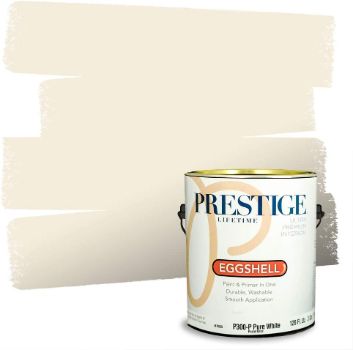
Satin
Satin paint has a smooth finish with a soft sheen. It’s more durable and easier to clean than eggshell paint, making it suitable for kitchens and bathrooms. Satin paint usually costs $30 to $60 per gallon.
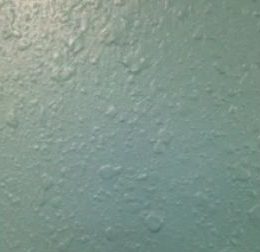
Semi-gloss
Semi-gloss paint has a shiny finish and is highly durable, making it ideal for trim, doors, and cabinets. It typically costs $30 to $60 per gallon.
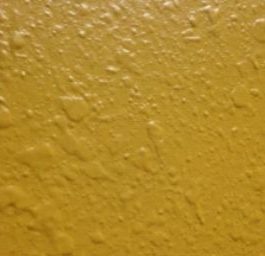
High-gloss
High-gloss paint has a very shiny, reflective finish. It’s the most durable and easy to clean, but it highlights imperfections. High-gloss paint usually costs $40 to $70 per gallon.
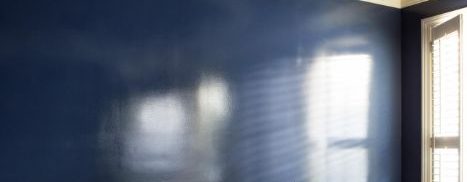
Paint Brand
Some top paint brands in the US and their average cost per gallon include:
- Benjamin Moore: $40 to $80 per gallon
- Sherwin-Williams: $30 to $70 per gallon
- Behr: $25 to $60 per gallon
- Valspar: $20 to $60 per gallon
Materials Required
Additional materials, such as brushes, rollers, trays, drop cloths, and painter’s tape, can add to the cost. These supplies can range from $100 to $300 or more, depending on the size and complexity of the project.
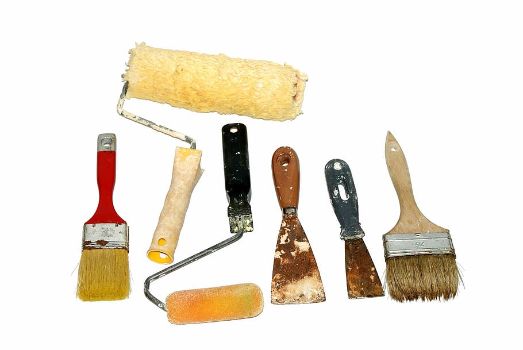
Labor Rates
Labor costs vary depending on the region and local market. Professionals typically charge $1.50 to $3.50 per sq. ft. for interior painting and $2.00 to $5.00 per sq. ft. for exterior painting.
Moving Furniture
Moving and protecting furniture adds time and labor to a project, which can increase costs. Some professionals may charge extra for this service, while others may include it in their overall estimate.
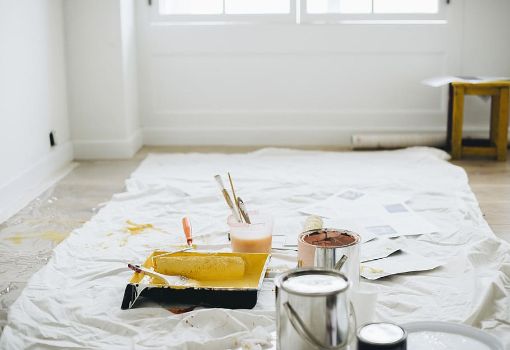
Paint Repairs
If walls or surfaces require repairs, such as filling cracks or holes, sanding, or priming, these additional steps will increase the project’s cost.
Additional Costs to Consider While Estimating Paint Costs
Drywall Texture
Textured walls may require more paint and labor to ensure even coverage and proper adhesion. If you need to add or repair existing textures before painting, this can increase the cost by $0.50 to $2.00 per square foot, depending on the type and complexity of the texture.
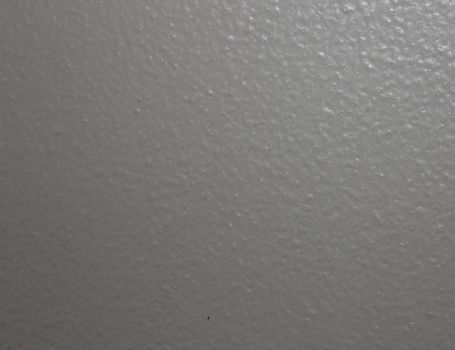
Accent Walls
Accent walls are painted a different color or with a different finish than the surrounding walls, adding visual interest to a room. Painting an accent wall can add $100 to $300 to the overall cost, depending on the size of the wall and the complexity of the design or pattern.
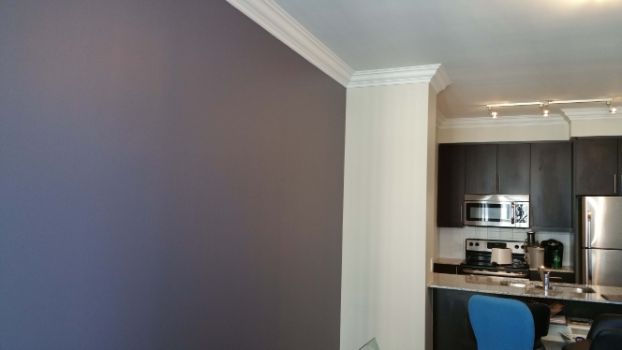
Ceiling Height
Higher ceilings increase the difficulty of the project, requiring taller ladders or scaffolding and more time to complete the work. Depending on the ceiling height and local labor rates, this can result in an additional $1.00 to $3.00 per square foot.
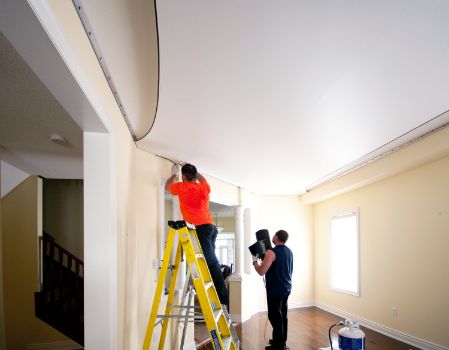
Spray vs. Roller Application
Spray application is typically faster but may require more paint and masking to protect surfaces from overspray. Roller application can be more time-consuming but usually provides better control and an even finish. Depending on the project’s size and complexity, spray application can increase costs by 10-30%.
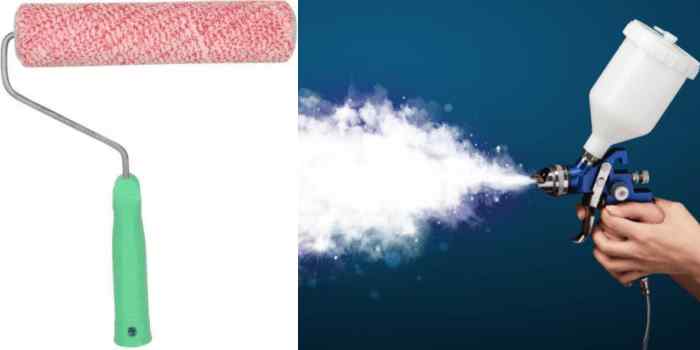
Permits
If your project involves replacing siding before painting, you may need a permit, which can add $100 to $500 or more to the overall cost, depending on your local regulations and fees.
Lead Paint Inspection
If your home was built before 1978, lead-based paint may be present. A lead paint inspection is necessary before painting to ensure safety. Inspection costs can range from $300 to $600, depending on the size of your home and the extent of testing needed.
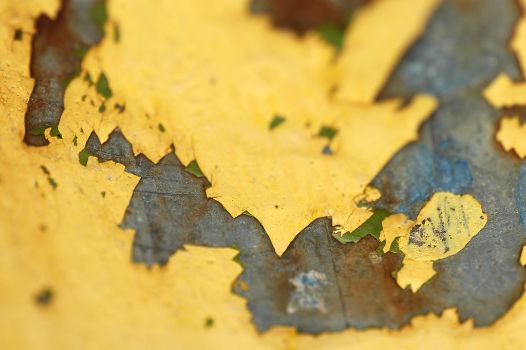
Mold on Walls
Mold on walls must be removed and treated before painting. Mold remediation can add $500 to $3,000 or more to the overall cost, depending on the extent of the mold problem and the necessary treatments.
Deck Staining
If your project involves staining a deck, this will add to the overall cost. Deck staining typically costs $1.50 to $4.00 per square foot, depending on the size and condition of the deck, the type of stain used, and local labor rates.
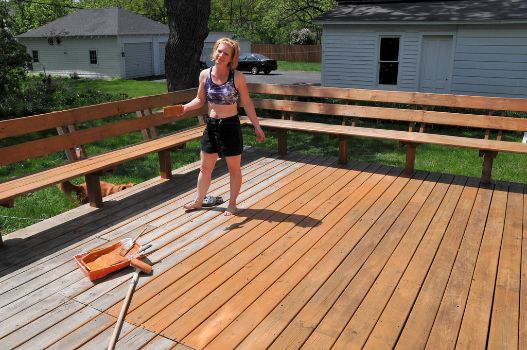
Tips to Save Money While Painting My Home
Professional Paint Job
Get multiple quotes: Request estimates from multiple painting contractors to compare prices and find the best deal for your project.
Time your project: Schedule your painting project during the off-peak season (fall or winter) when contractors may offer discounts due to lower demand.
Prep the area yourself: Save on labor costs by completing some of the prep work, such as cleaning surfaces, removing fixtures, and repairing minor damages, before the painters arrive.
Use quality paint: While higher-quality paint may cost more upfront, it typically lasts longer and provides better coverage, saving you money on future touch-ups and repaints.
Combine projects: If you have multiple painting projects or other home improvement tasks, bundling them together can sometimes result in a discounted rate from the contractor.
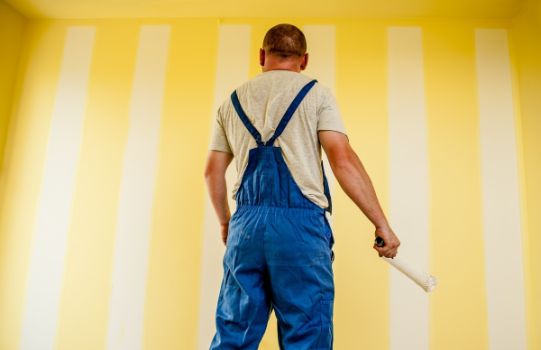
DIY Paint Job
Shop sales and discounts: Look for paint sales and discounts at local hardware stores or online retailers to save on paint and supplies.
Calculate paint accurately: Use a calculator to determine the amount needed to avoid purchasing excess paint or making multiple trips to the store.
Borrow or rent equipment: Save money by borrowing tools from friends, family, or neighbors or renting equipment like ladders and paint sprayers from local home improvement stores.
Repurpose materials: Use old sheets or plastic sheeting you already have as drop cloths, or save on painter’s tape using masking tape if you have some on hand.
Do proper preparation: Thoroughly clean, repair, and prime surfaces before painting to ensure the paint adheres properly and lasts longer, reducing the need for touch-ups and repaints.
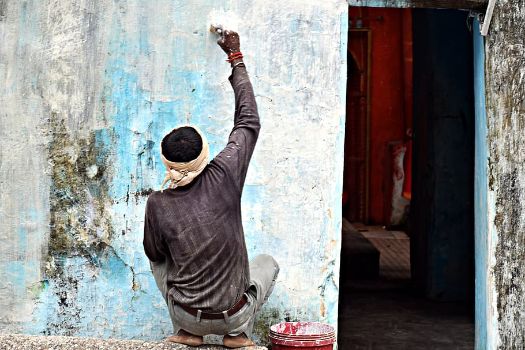
Frequently Asked Questions
What is the cost to paint a 2500 sq. ft. house?
The cost to paint a 2,500 sq. ft. house varies depending on location, materials, and labor rates. On average, interior painting can range from $3,750 to $8,750, while exterior painting can range from $5,000 to $12,500.
What is the cost to paint a 2-story house?
The cost to paint a 2-story house depends on the square footage. For a 1,500 sq. ft. house, it can range from $4,500 to $15,000; for a 2,000 sq. ft. house, it can range from $6,000 to $20,000; and for a 2,500 sq. ft. house, it can range from $7,500 to $25,000. These estimates include both interior and exterior painting.
Which is better: DIY or professional painting?
DIY or professional painting depends on your skills, budget, and time. DIY painting can save you money but requires more effort and time. Professional painting guarantees a high-quality finish and saves you time, but it’s more expensive.
How often do I need to paint my house?
The frequency of painting your house depends on factors like the type of paint used, climate, and wear and tear. Generally, it’s recommended to paint the exterior every 5-10 years and the interior every 3-7 years.